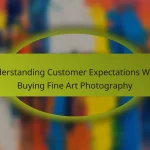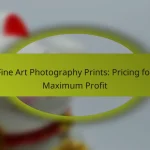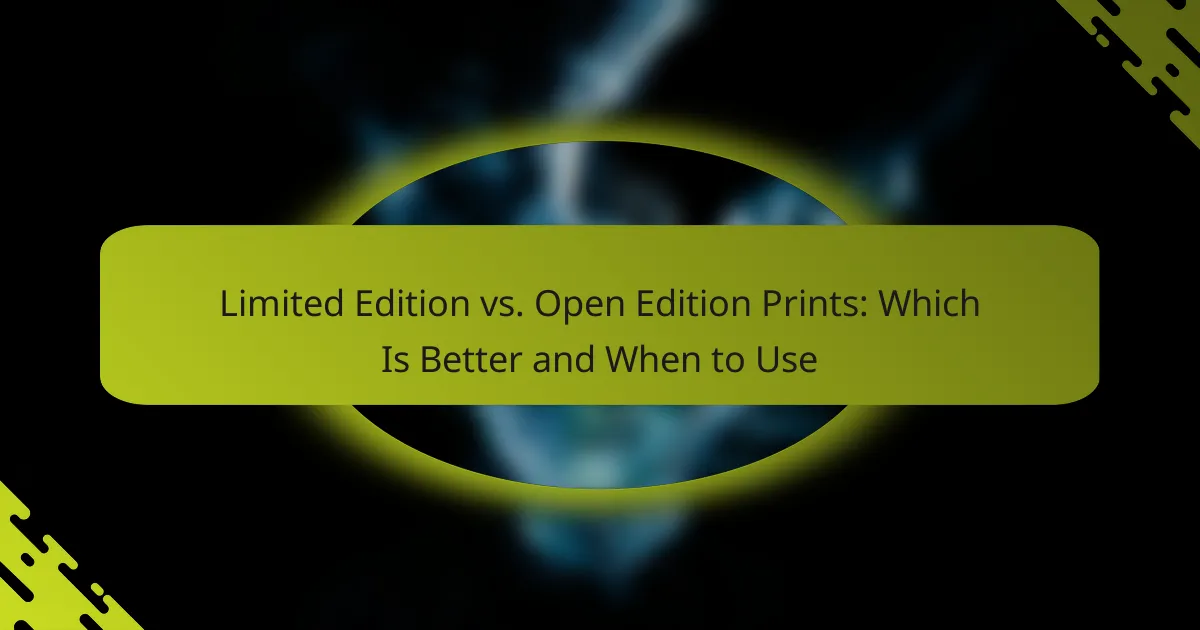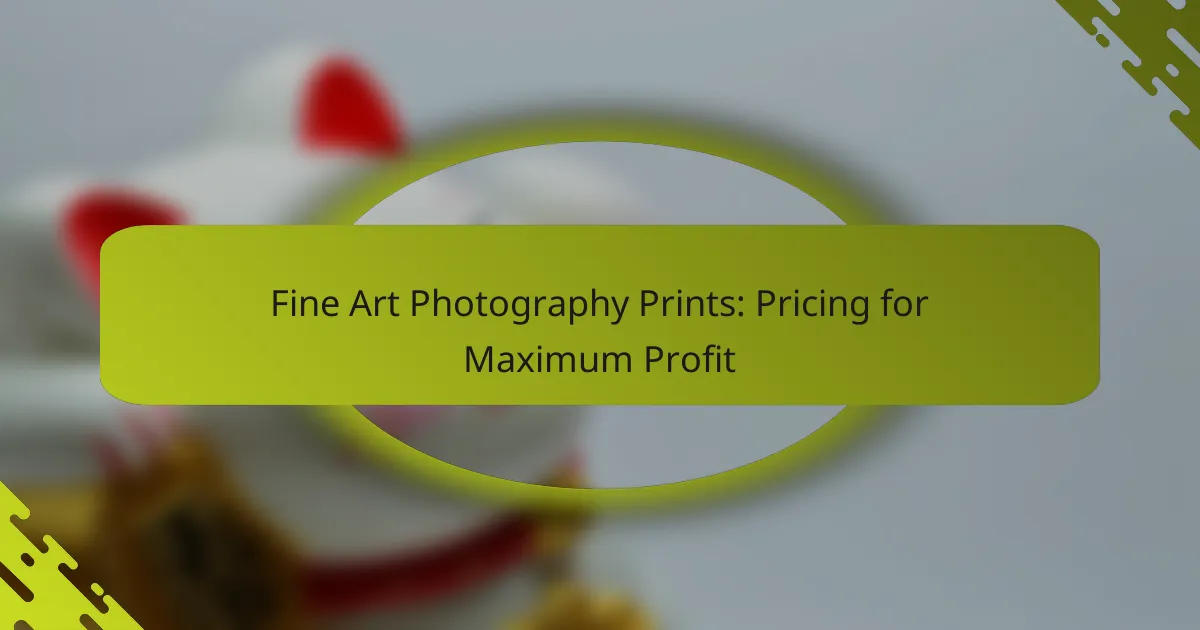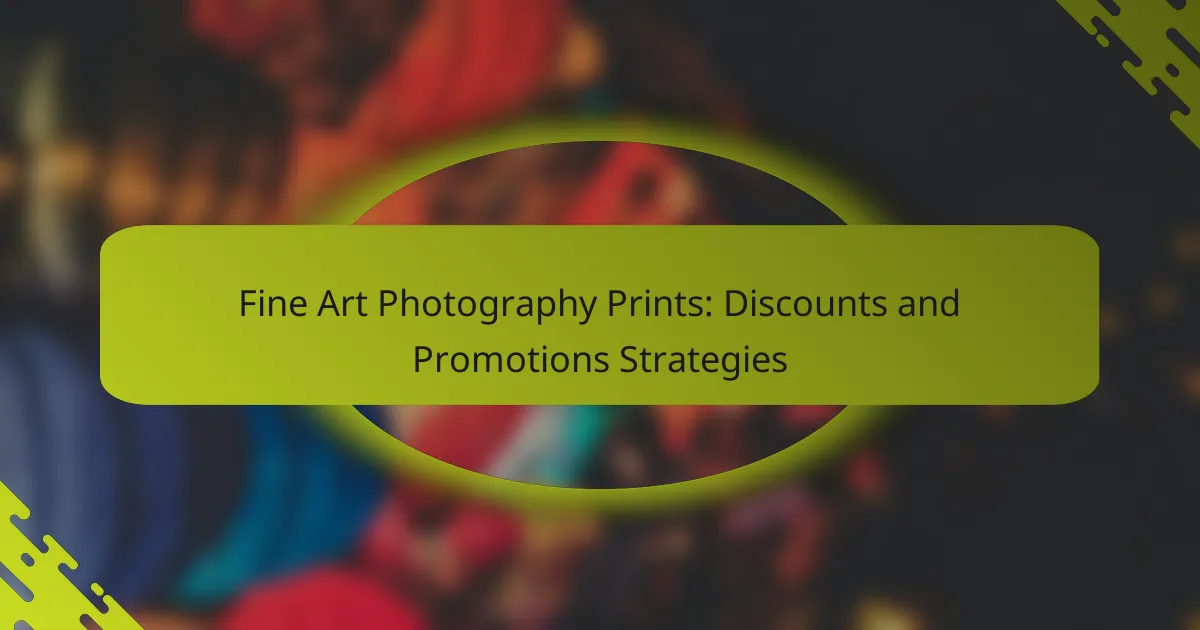When deciding between Limited Edition and Open Edition prints, it’s essential to consider factors such as exclusivity, collectibility, and budget. Limited Edition prints offer a sense of rarity and potential value appreciation, making them ideal for collectors and investors. In contrast, Open Edition prints provide affordability and accessibility, making them suitable for a wider audience and diverse environments.
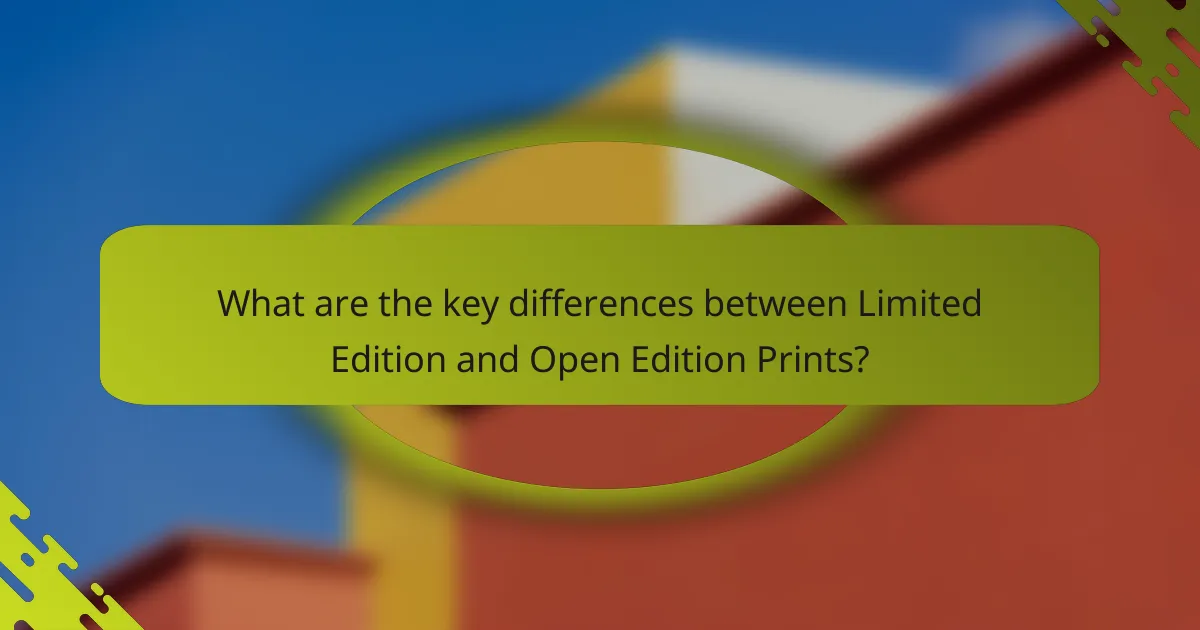
What are the key differences between Limited Edition and Open Edition Prints?
Limited Edition Prints are produced in a set number, making them more exclusive, while Open Edition Prints can be printed indefinitely. The choice between the two often depends on factors like collectibility, pricing, and intended use.
Limited Edition Prints have a fixed number of copies
Limited Edition Prints are created in a predetermined quantity, often ranging from a few dozen to a few hundred. Each print is typically signed and numbered by the artist, enhancing its uniqueness and value.
This fixed number creates scarcity, which can drive demand among collectors. When purchasing, verify the edition size to understand its exclusivity.
Open Edition Prints can be produced indefinitely
Open Edition Prints do not have a limit on the number of copies that can be made. Artists and publishers can print as many as they wish, which makes these prints widely available.
This unlimited production can lead to lower prices and more options for buyers, but it may also diminish the perceived value compared to limited editions.
Pricing varies significantly between the two types
Limited Edition Prints generally command higher prices due to their scarcity and collectibility, often ranging from several hundred to thousands of dollars. In contrast, Open Edition Prints are usually more affordable, often priced between $20 and a few hundred dollars.
When budgeting for art, consider how the edition type affects pricing and whether the investment aligns with your goals.
Collectibility is higher for Limited Edition Prints
Collectors often seek Limited Edition Prints for their potential to appreciate in value over time. The finite nature of these prints can make them more desirable in the art market.
Investing in Limited Edition Prints can be a strategic choice if you aim to build a valuable collection. Research the artist’s reputation and market trends to make informed decisions.
Open Edition Prints offer more accessibility
Open Edition Prints are more accessible to the general public, allowing anyone to purchase art without the high price tag associated with limited editions. This accessibility can encourage art appreciation and ownership among a broader audience.
For those new to art collecting or on a budget, Open Edition Prints provide a great entry point. They can also be an excellent choice for decorating spaces without the commitment of a significant financial investment.
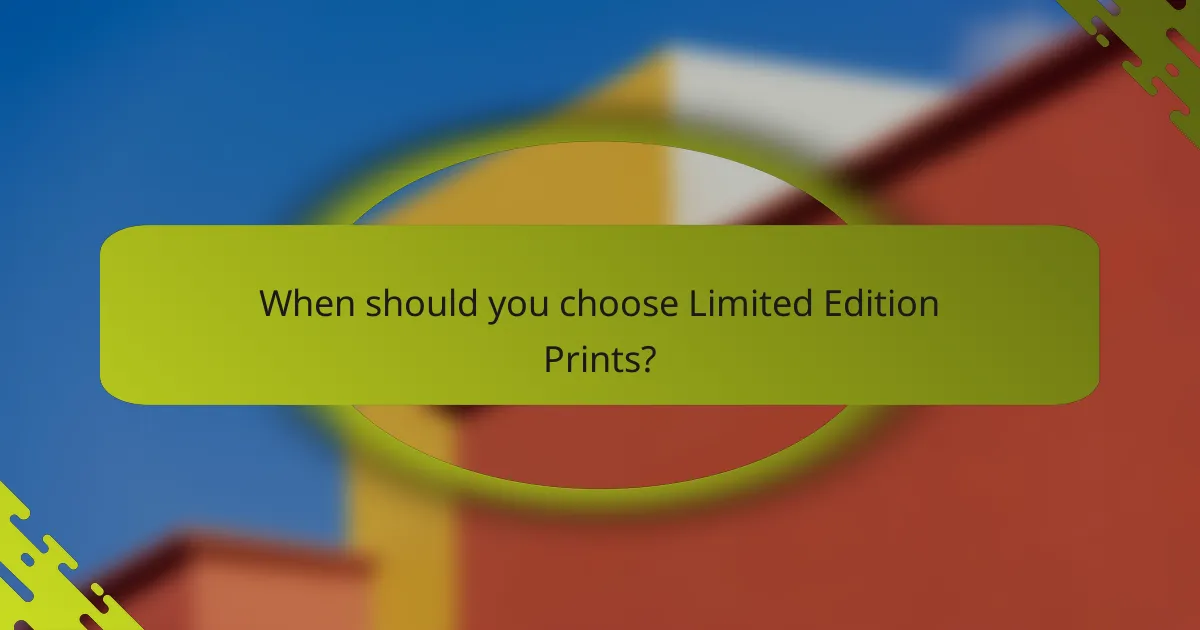
When should you choose Limited Edition Prints?
Choose limited edition prints when you want to invest in art, enhance the value of your collection, or seek exclusivity. These prints are produced in a restricted quantity, making them more desirable and potentially more valuable over time.
For investment purposes
Limited edition prints can serve as a solid investment, as their value often appreciates due to their scarcity. When considering an investment, look for prints by established artists or those with a growing reputation. The value can increase significantly, sometimes reaching several times the original purchase price.
Research the artist’s market history and the demand for their work. Limited editions typically have a set number, which can range from a few dozen to a few hundred, impacting their future value. Keep an eye on auction results and gallery sales to gauge market trends.
To enhance collection value
Incorporating limited edition prints into your collection can significantly enhance its overall value. Collectors often prioritize unique pieces, and limited editions stand out due to their restricted availability. This can make your collection more appealing to future buyers.
Consider the theme and quality of the prints you choose, as these factors contribute to the collection’s value. A well-curated collection that includes sought-after limited editions can attract higher offers when you decide to sell.
When seeking exclusivity
If exclusivity is your goal, limited edition prints are the ideal choice. These prints are often signed and numbered by the artist, providing a sense of ownership and uniqueness. This exclusivity can enhance your personal enjoyment and appreciation of the artwork.
When selecting limited editions, pay attention to the edition size and the artist’s reputation. Smaller editions tend to be more exclusive and desirable. Additionally, consider purchasing directly from galleries or the artist to ensure authenticity and secure the most exclusive pieces available.
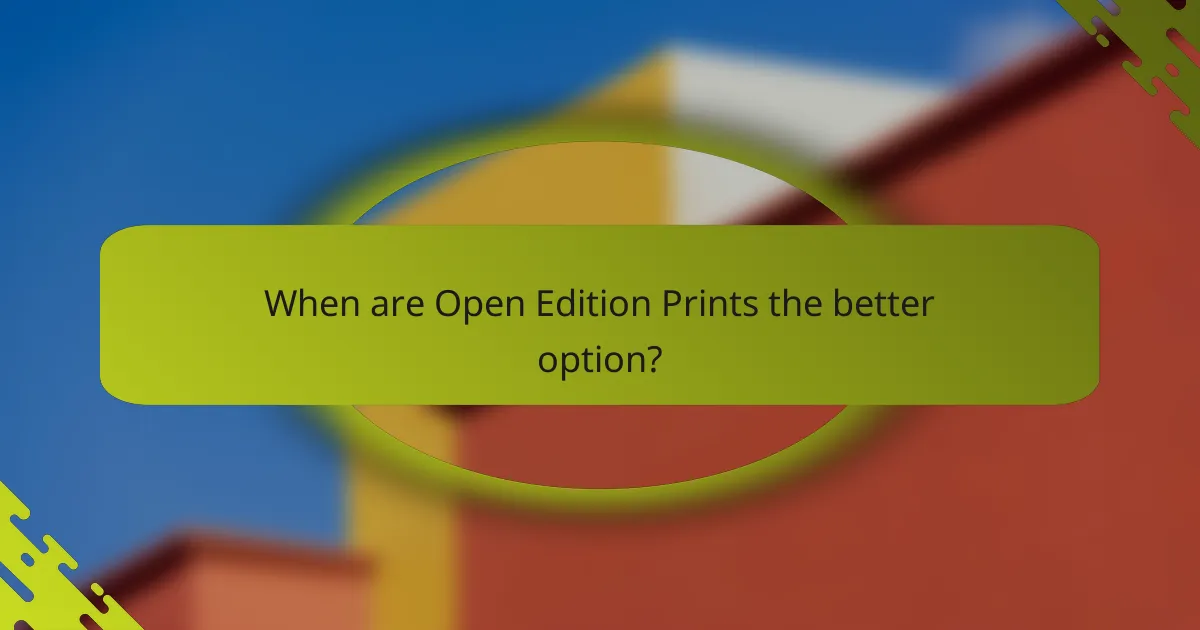
When are Open Edition Prints the better option?
Open edition prints are often the better choice when affordability and accessibility are key considerations. These prints are not limited in quantity, making them more budget-friendly and suitable for various settings.
For budget-friendly purchases
Open edition prints are ideal for those looking to enhance their space without overspending. Prices typically range from low tens to a few hundred dollars, depending on the artist and print quality. This affordability allows art lovers to build collections without financial strain.
To decorate spaces without high costs
Using open edition prints is a practical way to decorate homes or offices without incurring significant expenses. They provide a wide variety of styles and subjects, making it easy to find pieces that match different aesthetics. This flexibility allows for frequent updates to decor without breaking the bank.
For gifts or casual art displays
Open edition prints make excellent gifts due to their lower price point and wide selection. They are perfect for casual art displays, such as in rental properties or temporary setups, where investing in limited edition pieces may not be practical. Recipients can enjoy beautiful art without the pressure of high-value investments.

How do pricing strategies differ between Limited and Open Editions?
Pricing strategies for Limited and Open Editions vary significantly, primarily due to their availability and perceived value. Limited Editions typically have a higher price point due to their scarcity, while Open Editions are more accessible and priced to attract a broader audience.
Limited Editions often command higher prices
Limited Edition prints are produced in a restricted quantity, which often leads to higher prices. Collectors are willing to pay more for these exclusive pieces, as they are seen as investments that may appreciate over time. Prices can range from a few hundred to several thousand dollars, depending on the artist’s reputation and the print’s uniqueness.
When considering purchasing a Limited Edition, evaluate the number of prints available and the artist’s market presence. A lower number of prints usually correlates with a higher value, making it essential to verify the edition size before buying.
Open Editions are priced for mass appeal
Open Edition prints are available in unlimited quantities, making them more affordable and appealing to a wider audience. These prints typically range from tens to a few hundred dollars, allowing more people to enjoy art without a significant financial commitment. The pricing strategy focuses on volume sales rather than exclusivity.
When choosing Open Editions, consider the quality of the print and the reputation of the artist. While they may not hold the same investment potential as Limited Editions, they can still provide aesthetic value and enjoyment in various settings, such as homes or offices.

What are the implications for artists and galleries?
The choice between limited edition and open edition prints significantly impacts artists’ reputations and galleries’ sales strategies. Limited editions can create exclusivity, while open editions allow for wider distribution and accessibility.
Limited Editions can enhance an artist’s reputation
Limited edition prints often carry a sense of exclusivity that can elevate an artist’s status. By restricting the number of available prints, artists can create a perception of scarcity, which may lead to higher demand and increased prices.
Collectors often seek limited editions as investments, believing that their value will appreciate over time. This can lead to a stronger brand identity for the artist, as their work becomes associated with quality and rarity.
Open Editions can lead to broader audience reach
Open edition prints allow artists to reach a larger audience by making their work more accessible. With no restrictions on the number of prints, these pieces can be sold at lower prices, appealing to a wider range of buyers.
Galleries can benefit from open editions by attracting diverse clientele, including casual art buyers and gift shoppers. This strategy can help increase overall sales volume, even if individual print prices are lower.
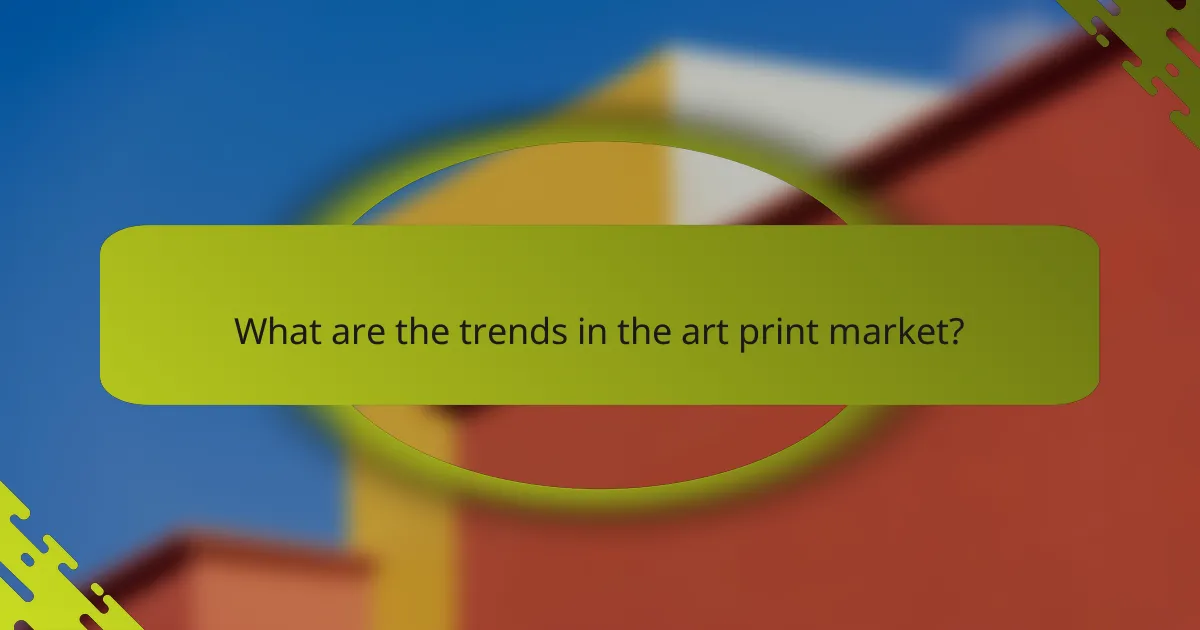
What are the trends in the art print market?
The art print market is experiencing notable shifts, particularly with the growing popularity of limited edition prints and sustainable practices. Collectors and buyers are increasingly valuing exclusivity and environmental responsibility in their purchasing decisions.
Increased interest in sustainable printing practices
More artists and printmakers are adopting sustainable printing methods to meet consumer demand for eco-friendly products. This includes using recycled materials, non-toxic inks, and energy-efficient processes. Such practices not only appeal to environmentally conscious buyers but can also enhance the overall value of the artwork.
For example, prints made with organic inks and recycled paper can attract a premium price, often appealing to collectors who prioritize sustainability. Artists may also gain recognition for their commitment to environmental stewardship, which can lead to increased sales and a loyal customer base.
When considering sustainable options, artists should research certifications like FSC (Forest Stewardship Council) for paper and look for local suppliers that offer eco-friendly materials. This approach not only supports the environment but can also differentiate their work in a competitive market.


